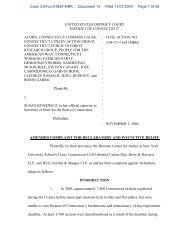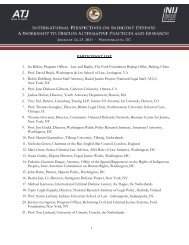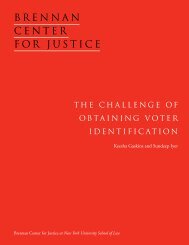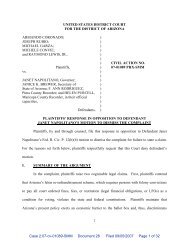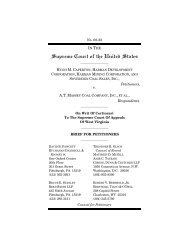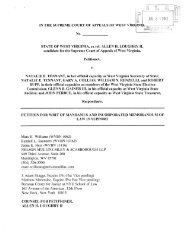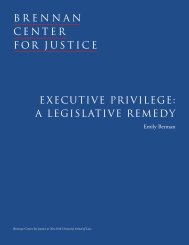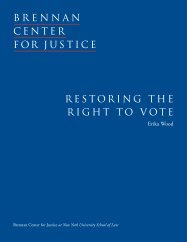THE NEW YORK STATE LEGISLATIVE PROCESS: AN ...
THE NEW YORK STATE LEGISLATIVE PROCESS: AN ...
THE NEW YORK STATE LEGISLATIVE PROCESS: AN ...
Create successful ePaper yourself
Turn your PDF publications into a flip-book with our unique Google optimized e-Paper software.
78 <strong>THE</strong> <strong>NEW</strong> <strong>YORK</strong> <strong>STATE</strong> <strong>LEGISLATIVE</strong> <strong>PROCESS</strong>: <strong>AN</strong> EVALUATION <strong>AN</strong>D BLUEPRINT FOR REFORM<br />
New York Legislative Digest. For all major bills during this period, the transcripts<br />
from both chambers on the dates of passages were also analyzed.<br />
■ Messages of Necessity. Information on messages of necessity for the 308<br />
major bills passed from 1997 through 2001 was drawn from the Legislative<br />
Bill Drafting Commission, <strong>STATE</strong> OF <strong>NEW</strong> <strong>YORK</strong> <strong>LEGISLATIVE</strong> DIGEST (1997-<br />
2001).<br />
■ Committee Votes. To understand how standing committees choose to vote<br />
on bills referred to them, we examined the complete voting records of the<br />
Assembly’s Committee on Economic Development, Job Creation,<br />
Commerce and Industry for the years 1997-2001 obtained from the<br />
Assembly Public Information Office.<br />
■ Historical Survey. The authors conducted historical research on legislative<br />
procedures and practices from 1777 to the present, but focused on the period<br />
since 1900. Sources included proceedings of the constitutional conventions,<br />
contemporary press accounts, contemporary studies of the New York<br />
State legislature and commission reports, secondary historical works on New<br />
York history, and political science literature on legislative procedure.<br />
■ Legislative Rules Analysis. Using the most recent versions of state legislative<br />
rules available on-line, the authors analyzed their treatment of specific steps<br />
in the legislative process, including limitations on debate, discharge of bills<br />
from committee, committee hearings, voting, and Rules Committees. The<br />
rules of all 99 legislative chambers were analyzed.<br />
■ Telephone Survey on Frequency of Debate and Voting Procedures.<br />
Interviews were conducted by telephone in November and December 2003<br />
with the agencies listed in Appendix B. A copy of the questionnaire used is<br />
also included therein. At least one source was interviewed from each state,<br />
where possible from a non-partisan research or library service associated with<br />
the legislature and devoted to maintaining the state’s legislative records in<br />
order to learn the frequency of debate on the floor, roll calls, and attendance<br />
at votes on the floor. Through this survey, we obtained complete information<br />
concerning 94 of the 97 state legislative chambers outside New York.<br />
■ Interviews with Legislators and Staff. In addition to the interviews conducted<br />
in connection with the committee analysis discussed above, numerous sitting<br />
members of the Assembly and Senate and members of their staff were<br />
interviewed concerning various legislative procedures; these interviews were<br />
conducted on the condition of anonymity to ensure that their responses<br />
would be candid and that they would not face any negative consequences<br />
from their colleagues or constituents. Accordingly, citations to these interviews<br />
have been coded with alphabetical identifiers in the footnotes.



